While living on Innisfree, we are pretty much self-sufficient (not counting food, of course). With 850 watts of solar and 400 amp hours of lithium batteries, we have more than enough power to run our boat – the navigation equipment, the fridge/freezer, the coffee maker, our induction cooktop (we only cook with propane when I need the oven), and our computers and mobile devices. Assuming the water is clean enough (ie: not too silty, and no oil or fuel slicks like you often see near towns and marinas), we can also run the water maker off the solar and keep ourselves stocked up with fresh water. The only thing that really keeps us moving is the holding tank, which can only be emptied a few miles offshore, or at a pump-out station, but we haven’t seen many of those in the Med. (We do occasionally need diesel, too, but only a few times a season, depending on how much distance we’re travelling).
After almost a week in Mahon, we were feeling the demands of the holding tank, so it was time for us to get moving. We left on Friday morning, drifting northward on about 10 knots of wind, with just the genoa up to keep us moving. The previous day’s thunderstorms had reappeared, and we watched the grey clouds move along the island as we drifted by, several miles offshore. Eventually, after the storms had subsided, we tucked ourselves in behind Isla Colom, on the NE side of Menorca. We dropped anchor just beside the mooring field, and then I went snorkelling while Mike stayed aboard and worked on his laptop.
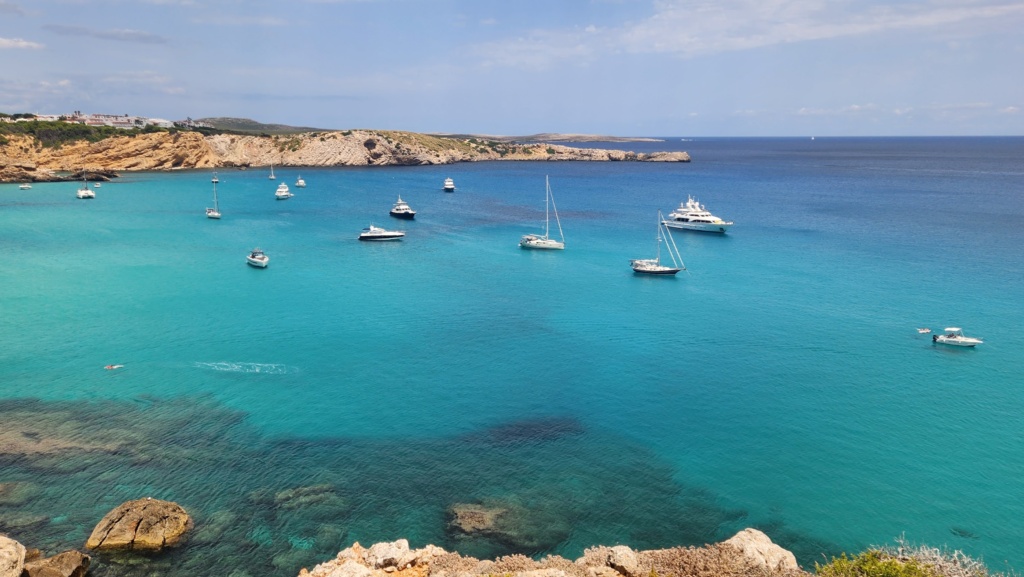
The next morning we moved farther up the coast, again taking advantage of the south wind and sailing slowly along with just the genoa. We anchored in an undeveloped bay near the beach town of Arena Castel, and then took the dingy to shore so we could hike along the high cliffs of the bay. We walked across the point and down into a little rocky beach for a swim – not sure why this was better than just swimming off the boat, but at least it provided a little adventure!
A thunderstorm passed by overnight, so the swell was up the following morning. Our little swimming bay from the day before would have been very unsafe in these conditions! We sailed around to Fornells Bay, a large, well protected anchorage on the north side of the island. In Fornells, we did the other thing that regularly draws us ashore – laundry! Fill up a duffle bag, haul it to shore in the dinghy, wash it at the laundromat, and then take it back to the boat to put it outside in the solar-powered clothes dryer (aka: laundry lines!). I try to stay on top of the laundry so it doesn’t pile up too much, and I have even taken to handwashing a lot of our clothes to minimize trips to the laundromat (also because I am a magnet for stains, and am often trying to scrub out a stain before it sets!). But washing bed sheets by hand is where I draw the line. I have done it, but my shoulders really don’t thank me for it afterwards. Also, the upside to the land-based laundromat is ice cream while we’re waiting, so it’s not really that bad a chore!
When we dropped off the sail bag for repairs in Mahon, our initial plan was to sail quickly back to town on Monday morning and then make the trek over to collect the bag. Maybe one of us could go ashore in the dinghy while the other one stayed on the boat, circling in the bay close to the upholstery shop, where you aren’t allowed to anchor. Or perhaps we could use a taxi, so it would be faster than going on the bus. As we sailed up the coast, however, I had the idea to rent a car and drive back to town – what counts as two days of sailing around the coast can be covered by car in only an hour or so.
Sure enough, we were able to arrange an inexpensive car rental out of Fornells – technically from of the beach town on the other side of the point, just a 45-minute walk away. So, on Monday morning, we locked the dinghy to a bike stand near the beach, did the walk across the point, and then spent the day touring Menorca before picking up the finished sail bag.
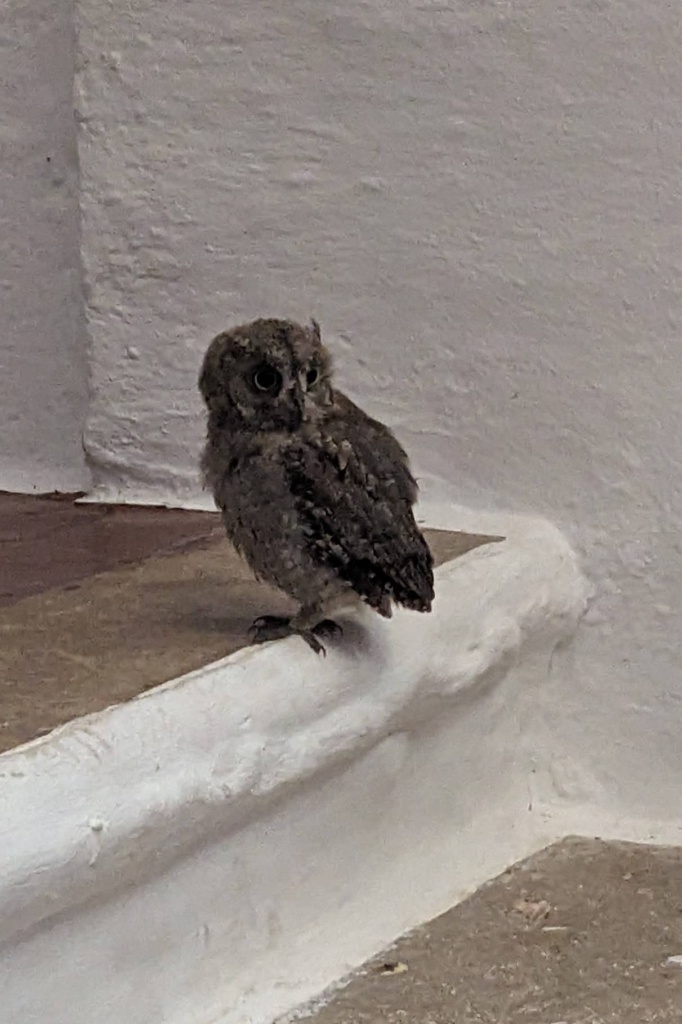

Out first stop was Monte Toro, the highest point on Menorca at 360m. At the top of the hill is a sanctuary to Our Lady of Monte Toro: the existing chapel was built in the 17th century on top of a 12 century Gothic church. There is also a little café, and of course a tourist shop. Waiting at the door of the church was this tiny little Scops Owl!
From Monte Toro we drove to Mahon so Mike could get a boat piece fixed at a local welder. The welder needed an hour, so we passed the time with a visit to a nearby archaeological site called Talaiti de Dalt. The site is one of several hundred sites connected with the Talaiotic Culture, people who lived in Menorca and Mallorca from the 2nd century BCE to the arrival of the Romans in 123 BCE. Archaeologists can see several stages of societal change over this long time period, but there are enough similarities to link them into one over-arching culture. The Talaiti de Dalt site features the remains of a number of house structures; a Talaiot, or ritual tower dating to 900-800 BCE; and a Taula, a large stone table-like structure at the centre of a circular ritual site, which dates to 550-123 BCE. We had learned a fair bit about the Talaiotic culture from the exhibit in the Mahon Museum, so it was really interesting to explore one of the sites in person.
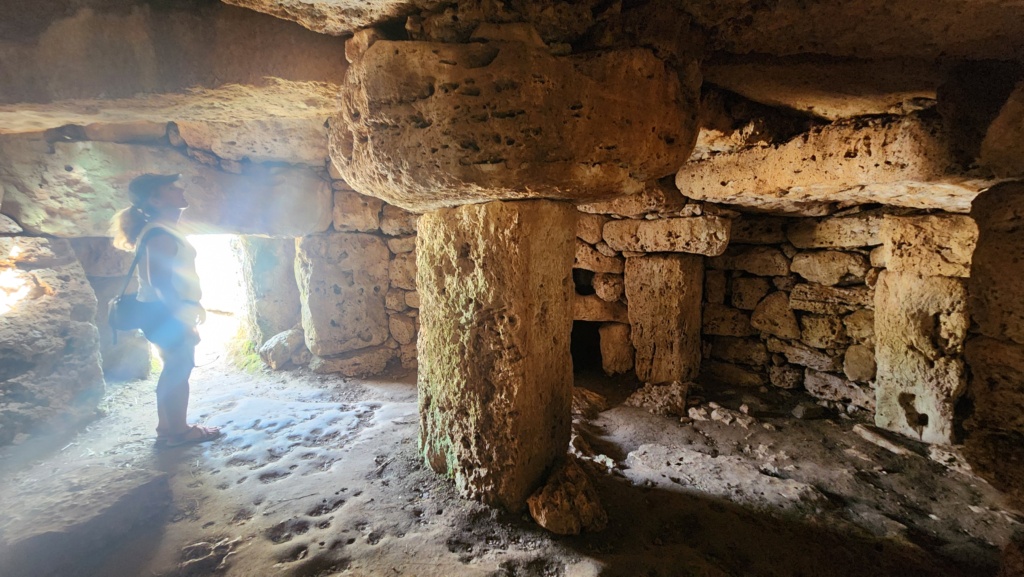

By this time we had received word that the sail bag wouldn’t be ready until the very end of the day, so we used our time as efficiently as possible. We picked up the welded bit, stopped for lunch in the town of Alaior (and took a little walk around), and then drove to Cuitadella on the western tip of Menorca. In the typical way of sailing, what us 3 days to sail during the previous week was just an hour’s drive in the car. 😉
Cuitadella was built up as the government centre of Menorca. Founded by the Carthaginians and later occupied by Romans (from 123 BCE) and then Muslims (10th century BCE), Cuitadella was made the capital of Menorca in 1287 when it was conquered by the King of Aragon. James II of Menorca fortified the city in the early 1300’s, reinforcing and expanding the Muslim-era fortress that existed in the centre of the city. These walls remained in place until the 1850s – early sections still exist near the centre of town, near the base of the city’s narrow harbour.
The architecture of Cuitadella ranges from the 13th century gothic Cuitadella Cathedral – which now sports a 19th century façade – to the 19th century manor houses and palaces that were built by British and then Spanish aristocrats, as a means of showing off their wealth. We didn’t have a ton of time, so we mostly just wandered the old streets, soaking in the atmosphere and trying not to get lost in the winding streets.
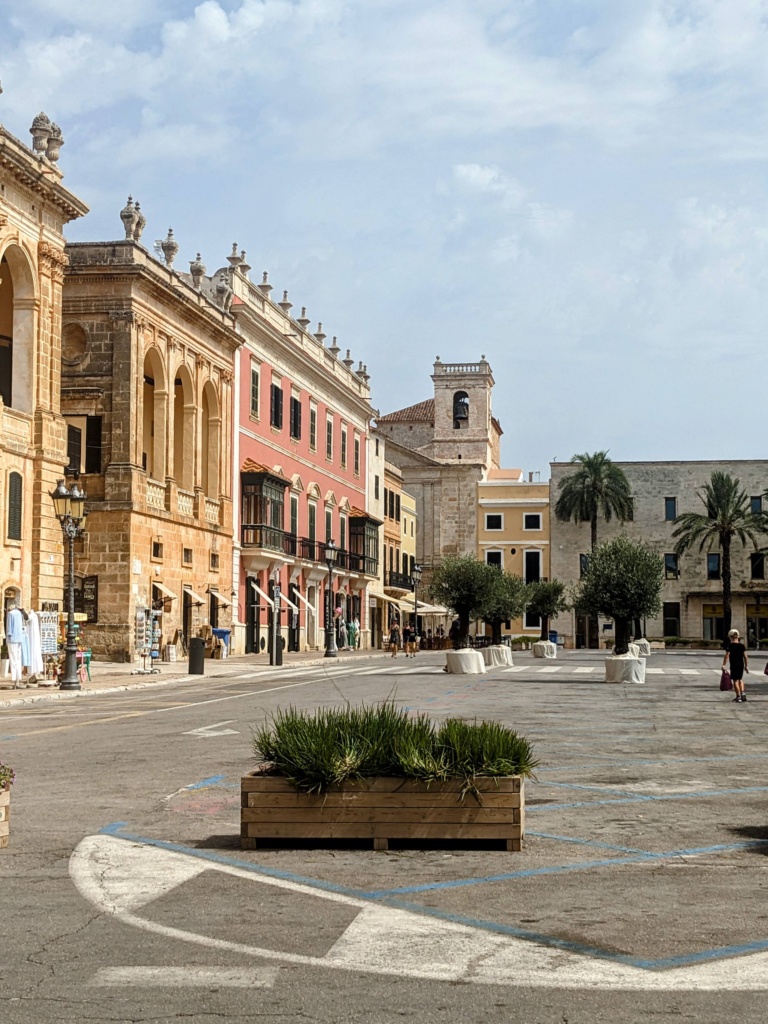

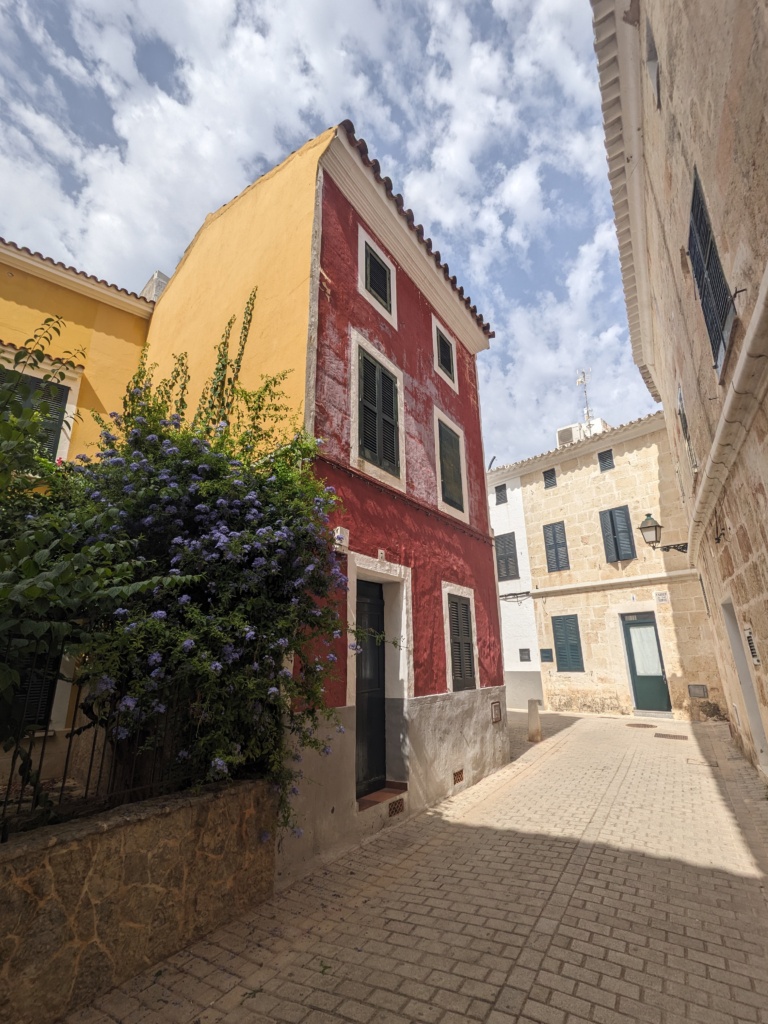

After exploring for as long as we could, we hopped in the car and drove the 45km back to Mahon to pick up the sail bag. It all went smoothly, and we were on our way out of the city, when suddenly we got a flat tire – a quickly-deflating puncture caused by driving over a nail. Nothing terrible, but just another twist to the day’s adventure. We made a quick call to the rental shop (whose head office turned out to be just minutes away from where we’d stopped!), swapped to a different car, and were on our way. Mike dropped me beside the dinghy with the sail bag and all our gear, drove the car back to the other side of the point, walked back to where I was waiting, and then we were back on Innisfree – and exhausted! – by 9pm.
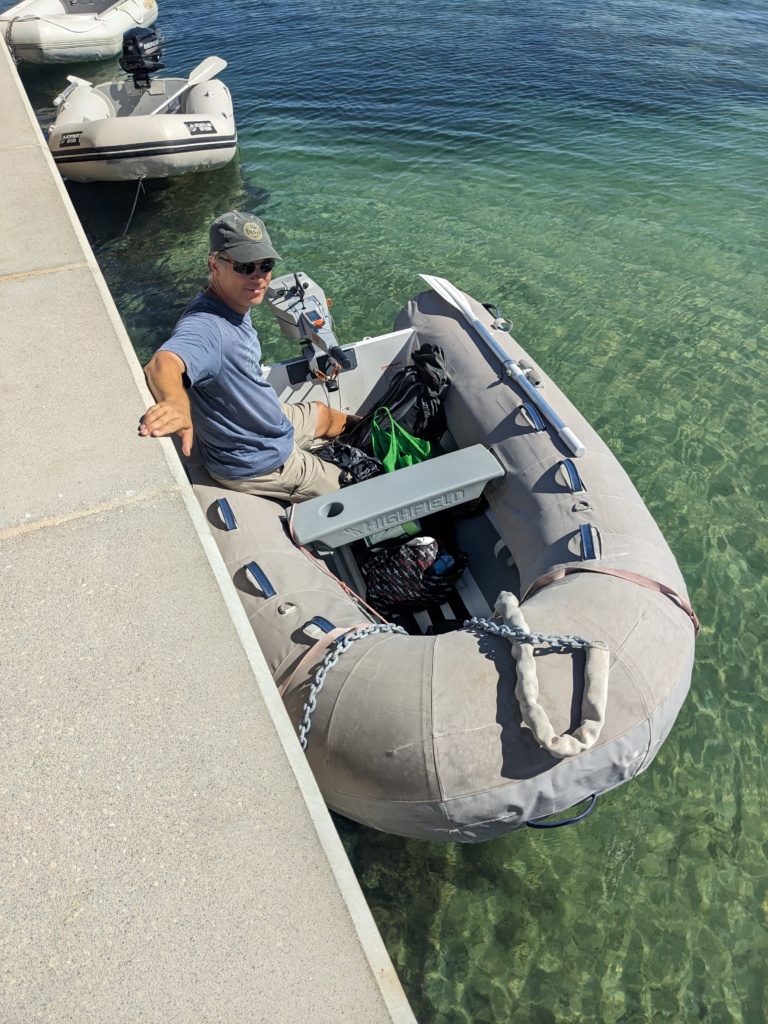
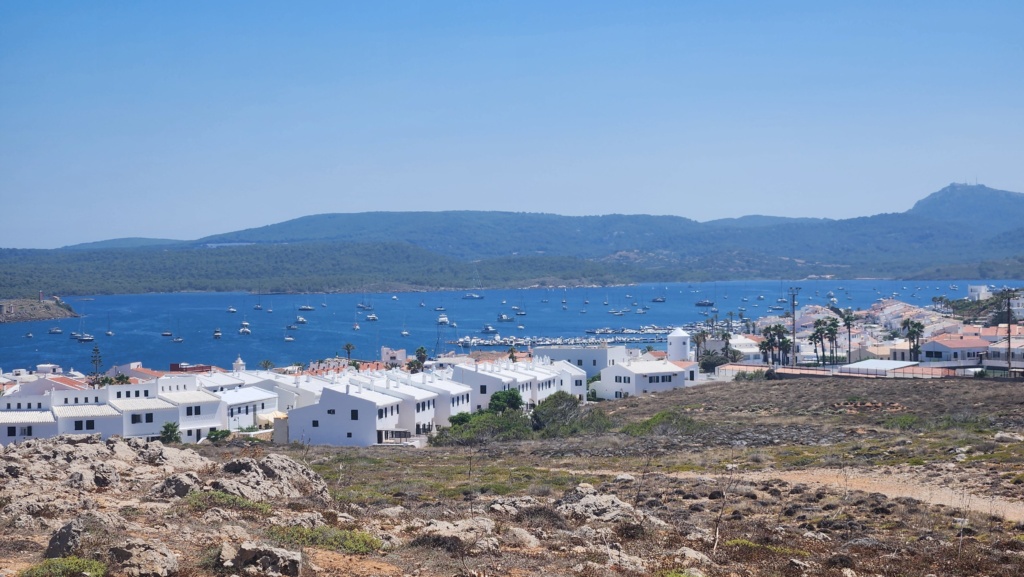
We recovered from our land adventures with a few days of laying low on the boat. We didn’t get a weather window to sail to Corsica wasn’t until Friday (the rental escapade was on Monday), so we spent the time exploring Fornells, food shopping, swimming, knitting – and then ripping out! – a baby sweater, and generally just hiding out from the hot weather. Its times like this that we are happy not to be dependant on marinas for power and water. A night at a marina in high season is anywhere from 80 to 150 euros – so imagine how fast that would add up while waiting for a weather window?!